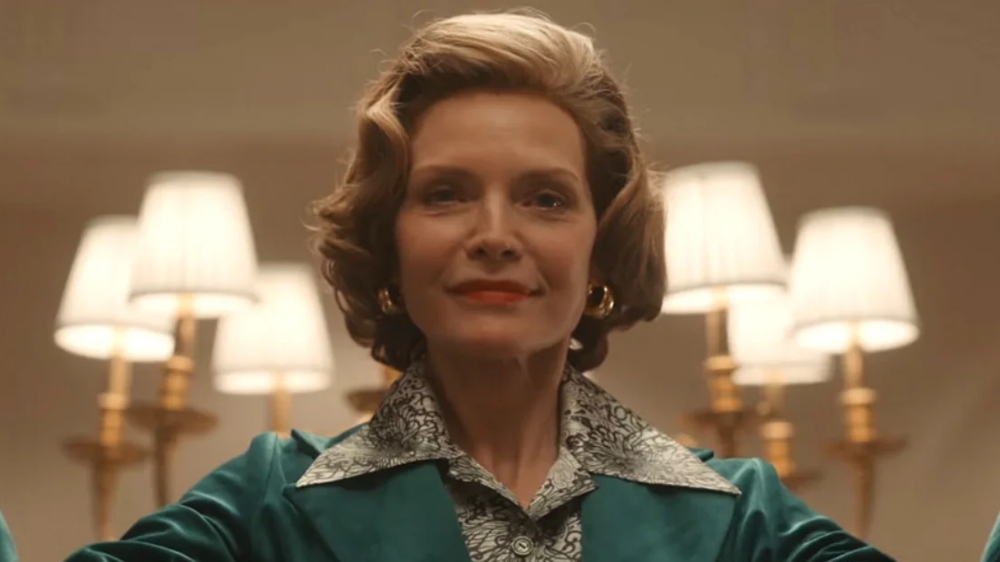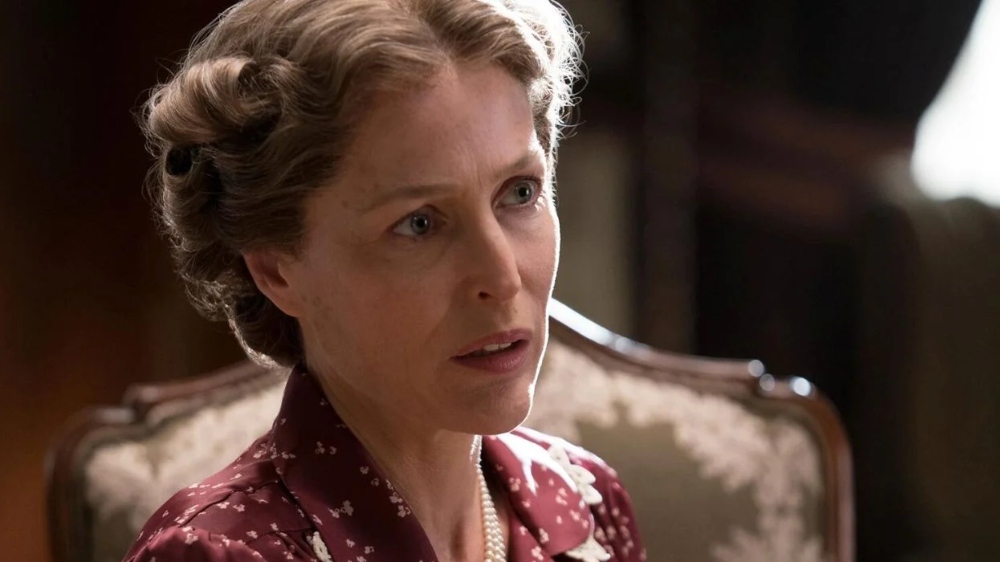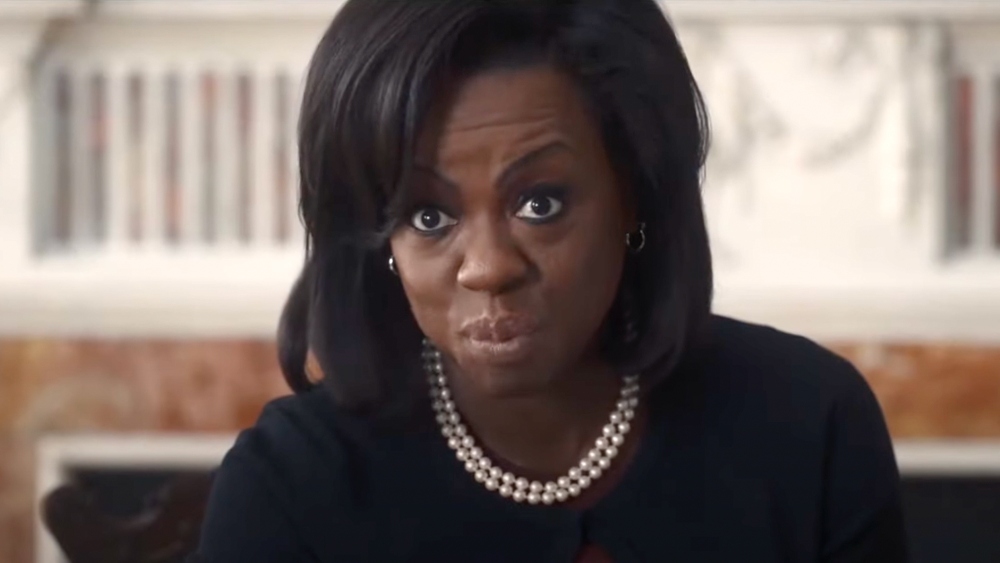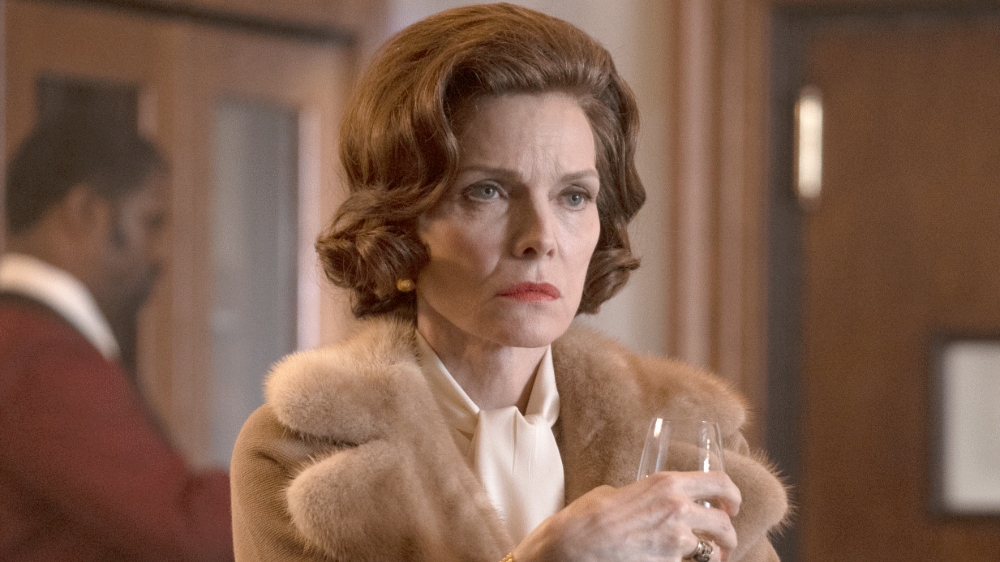
Showtime’s new tripartite series The First Lady follows the remarkable White House lives of three iconic First Ladies — Eleanor Roosevelt (Gillian Anderson), Betty Ford (Michelle Pfeiffer), and Michelle Obama (Viola Davis), and explores how the responsibilities of the First Lady have both changed and stayed the same over time.
Created by Aaron Crowley and directed by Susanne Bier (Bird Box), the series interweaves their stories, drawing subtle parallels between them while contrasting the different styles and personalities of each woman. The series jumps around from the ’30s and ’40s to the ’70s and eventually to the recent past when Barack Obama was President, and it does a good job of laying out a subtle thread that connects these various administrations.
This week, we spoke to one of The First Lady’s production designers, Tony Fanning, who created the sets for two of the three stories: the Roosevelt White House and the Obama White House. Of course, shows about the First Couple abound, and Presidents, First Ladies, and the White House have been repeatedly depicted in film and television, while in real life, they’re constantly seen on the news, which raises the bar in terms of audience expectations. The White House is a set that people feel like they know because they’ve seen it before, even if they’ve never actually toured 1600 Pennsylvania Avenue.
Fanning himself is no stranger to D.C. duty, having worked on The West Wing, Lincoln, and Thirteen Days, so he fancies himself a White House history buff and accordingly had a great time working on The First Lady. Read on to find out how he went about tackling the unique challenge of making a set as familiar as the White House feel fresh — twice, no less.

Below the Line: How did you come to work on this show?
Tony Fanning: I became involved through [showrunner] Cathy Schulman, who I had worked with on a previous feature. I took over the Michelle and Eleanor blocks, because as you know, the show was done in three separate blocks with three separate casts. Thankfully, I did not come into this completely blind. I worked on Lincoln, 13 Days, and The West Wing, so I’m a bit of a White House geek only through having done a lot of projects that involve the White House. And that’s the experience I brought on.
BTL: You had to recreate two different periods of time and you’re dealing with audience expectations for both, so you have to meet those while also doing something fresh and creative. How did you achieve that?
Fanning: I immersed myself in the characters’ biographies and did research from both the White House Museum and the Presidential Museums. I read as much about the characters as possible, and also, there are some really good documentaries about these two Ladies that I worked with.
Of course, we have expectations because we know Michelle Obama, or we feel like we know her. I thought I knew her, but I got to know her a lot better through her biography and [reading about] her personal life, which I don’t think a lot of people have done. And she was the harder one to get absolutely right because she’s more recent. So, fewer liberties. But, on the other hand, she was our Cinderella story, because she came from the south side of Chicago [from] a working-class family, and then worked herself up through Ivy League schools and then, into the White House — against her will, I might add. Getting Michelle right was super important for us. I relied a lot on Michael Smith’s book and his biography.
We took a bit more liberties with Eleanor because most of her — even though there was quite a bit of research about the [Roosevelts] — was in black and white. So, we were able to take more liberties with the colors and textures. Of course, we stuck to the period, but we wanted to bring it up to the same level of complication and elegance that the two others had. So we took some more liberties with that character and that administration.
Also, remember that that administration’s White House was a transitional one, and an accommodating White House, because of Franklin’s handicap. Franklin had a lot to do with where the Oval Office was, and how you access it. He made changes that allowed him to have privacy to get back and forth to the residence without people seeing him, so that he was seen less in the wheelchair. Those changes are there today and are just accepted. When you see the President walk through the colonnade from the Oval Office, that’s his doing and that’s how we show it.

BTL: What patterns and textures did you select for that period and why?
Fanning: Betty had already been shot and her period had specific colors — she favored yellow, floral patterns, and softer fabrics. The Obamas had an older color palette, and they liked more textural stuff. So we wanted to separate out the Eleanor block through the taste of the character, and what they both liked. Franklin was a sailor and they both liked the outdoors and the country, and their privacy, as well as socializing. We came up with a color palette that Franklin was in blues and greens and whites, and Eleanor was in lavender, purple, [and] blue. And then for Hick, Eleanor’s friend and companion, we went more for maroons and reds and roses. That way you would get the purple vibe mixing the red and the blue — it was something we tried to implement for the subconscious. It does not stand out, but that’s on purpose. You’re supposed to feel like you move into that block, because the blocks have consistent colors.
BTL: What are the colors in Michelle?
Fanning: For Michelle, it was oranges, tangerine, and deep green. It was fall colors or Earth tones, you could say. There was a richness, because in our research it was obvious that they were attracted to those colors and used them a lot. Michael Smith implemented and incorporated those bold colors and the saturation of color into the White House, which is different from what we had seen in other administrations. It was one of the more elegant and forward-thinking things that Michelle did during the administration.
A lot of the furniture and materials were actually made by Michael Smith’s company. But then, unfortunately, we could not get a lot of it in time, [as] they were custom-made and during COVID, the lead time was so much longer. We ended up having to duplicate it as best as we could, or find alternatives.

BTL: How did you source the furniture for the Eleanor block?
Fanning: Most of the furnishings came out of the Upper East Coast area. We had buyers in New England, and then also Georgia. We also had buyers in Los Angeles. All of them pulled from prop houses. We had containers of dressings and furniture shipped out from Los Angeles to Atlanta.
BTL: Were there any pieces you found that stood out for whatever reason?
Fanning: Well, for Eleanor, there’s a whole storyline with furniture, right? Two of her friends founded the Val-Kill furniture company, that sort of heirloom line of furniture. At the Hyde Park estate, they used a lot of it. That cottage, which Franklin built for Eleanor and her friends, is where she eventually retired, and they made a lot of handmade, custom American furniture there. In fact, Eleanor later asked that some of it be used in the White House.
So those pieces today are very rare. We had collectors and others who allowed us to use the pieces but we had to protect them and insure them so that there was no damage to them when they were onset. So definitely that part was the most interesting of the Eleanor block — to incorporate this more artisan, craftsman furniture with the high-end, more presidential interiors and furnishings. These were kind of at odds with each other, but that was Eleanor in a nutshell, actually.

BTL: Anything in particular about Michelle Obama?
Fanning: There wasn’t a particular piece of furniture, but I was interested in the choices they made in the arts. She wanted to bridge the traditional approach to the White House and make it a modern, contemporary home. She wanted to make it more relatable to contemporary Americans. And they did an excellent job at that, by the way. So the choice of art was interesting to me. I found the residence to be the most homey of the three Ladies, and that was a directive from Michelle — to make sure that the girls and her own family were comfortable in the space, that it was more welcoming and friendly and less jarring. And so, reconstructing that was appealing. So much thought went into it, and that was a challenge, but very fun.
By contrast, Eleanor just didn’t care that much about decorating. In our storyline, there’s a bit where she’s dueling with Sara Roosevelt about decorating and she gives in. Also, the White House was not as big of a showplace in that period anyway.
BTL: You’ve worked on so many White House-related projects. Was there anything about this project that stood out to you, or something you learned about the White House that you did not know before?
Fanning: Mostly that it was told from the Ladies’ point of view. It’s just far more personal than you normally get. We are, of course, crossing over with historic events, but we are still trying to tell the more personal side of it, the emotional side of it. That appeals to me, and that stood out. Also, when you do that, you’re more character-driven.
I learned the most about how Franklin affected the actual White House. I really had no idea the extent of it. I had never concentrated on that point. He really had an interest in the architecture of it and was motivated to make things a certain way for him to live there. The East Wing — he had it built, which is where the First Lady’s offices are. So the White House was very different by the time of FDR [from] how the other administrations used it. It became more of a place to socialize and come visit them. Therefore, it was more private. It became more of a guesthouse for diplomats and family to come visit.
The First Lady premiered on Showtime in April and will wrap up its first season in mid-June.
https://www.youtube.com/watch?v=j36nGWGC5FI





